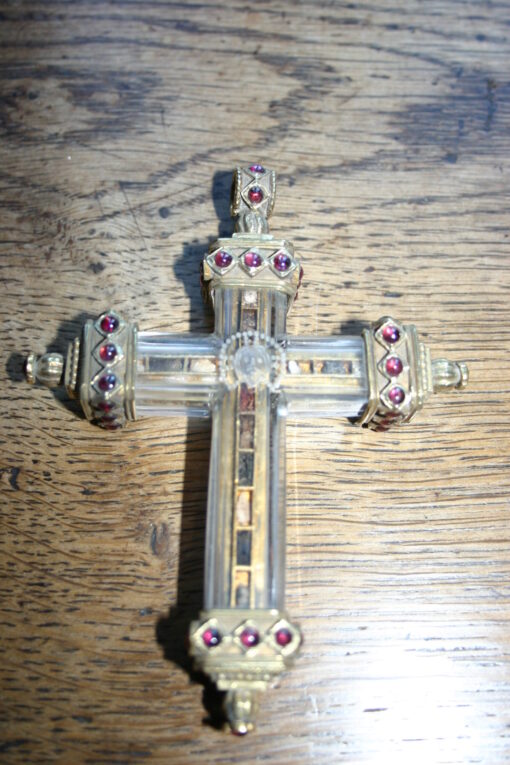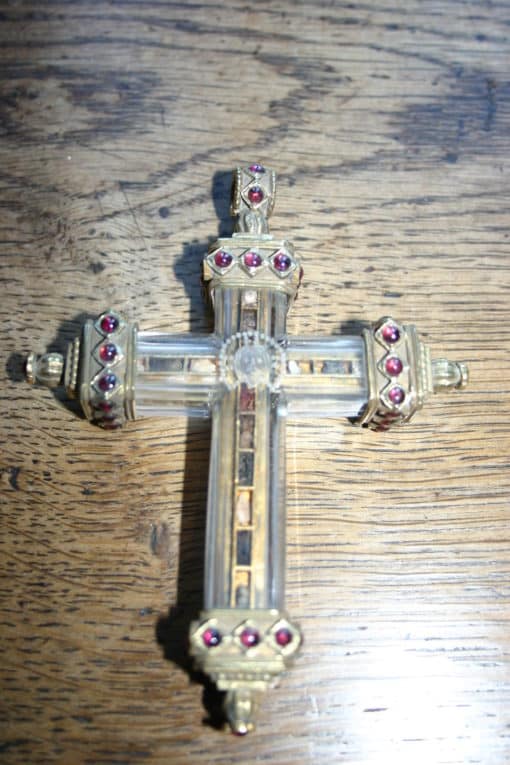

The theme for this week’s #MedievalMondays with Historic Houses is crosses.
For much of its tenure as the dominant religion in Europe, the Catholic Church was preaching in Latin, to a largely illiterate, non-Latin speaking population. In order to combat this, Catholic churches of the Medieval and Tudor periods were often richly decorated and filled with details, ranging from the brightly painted interior walls and expensive fabrics and vestments to the severe looking carvings, and dazzling precious metals of the cups, plates and crosses, all of which helped to underline the wealth, power and divinity of the Church.
Later, as the wealth of the Catholic Church came into question, and in some countries, gave way to the rise of Protestantism – which was less ornate and delivered in the language of the congregation, meaning it could put added emphasis on words instead of imagery – historic religious items became less common and increasingly valued as collectables.
As a man with a deep interest in both spirituality and the collection of historical artefacts, it is perhaps no great surprise that former owner, William Waldorf Astor amassed an impressive assortment of religious ornaments and objects, many of which remain here at Hever Castle.
These include an ornate cross made of rock crystal. The Waldegrave Room also conatains a hidden Oratory with a cross on its altar.
The Catholic Waldegrave family owned Hever Castle from 1557 until 1715. In 1584 the Oratory was added to this room, hidden behind panelling so Sir Edward could practice his faith in secret.
If you enjoyed this item on crosses then why not discover the previous news items on history.
Book your visit to Hever Castle & Gardens.
Within the grounds of the Hever Castle Estate, there are two opportunities for you to stay the night with us.
Hever Castle has played host to many important events and celebrations for over 600 years. In 1903 when William Waldorf Astor set about restoring Hever Castle to its former glory, he added the Astor Wing, to accommodate his family and guests, before creating a lake and the spectacular Italian Garden to house his impressive collection of ancient Greek and Roman statuary.
There are multiple places to eat & drink across the Hever Castle Estate. Select between the Castle & Gardens and Golf Club below to discover more.
Set in the mature grounds of the Hever Castle Estate, Hever Castle Golf Club is a 27 hole Kent golf course that will encourage and inspire all golf enthusiasts.
Set in the mature grounds of the Hever Castle Estate, the Wellbeing Centre consists of five smart treatment rooms.